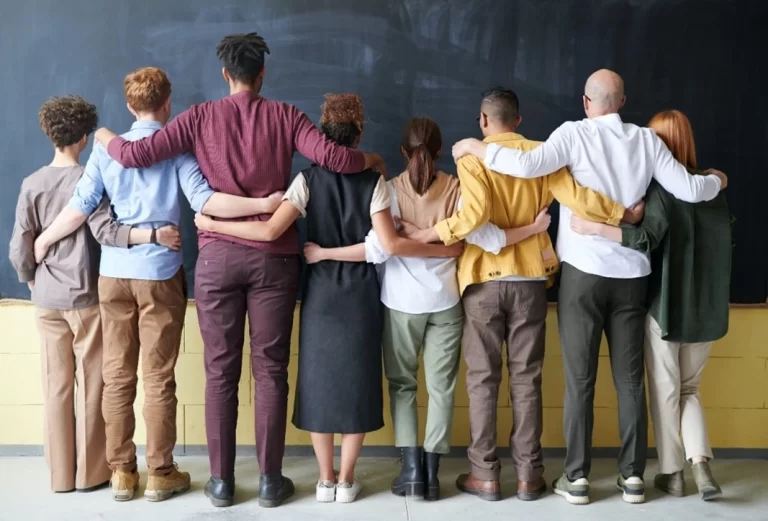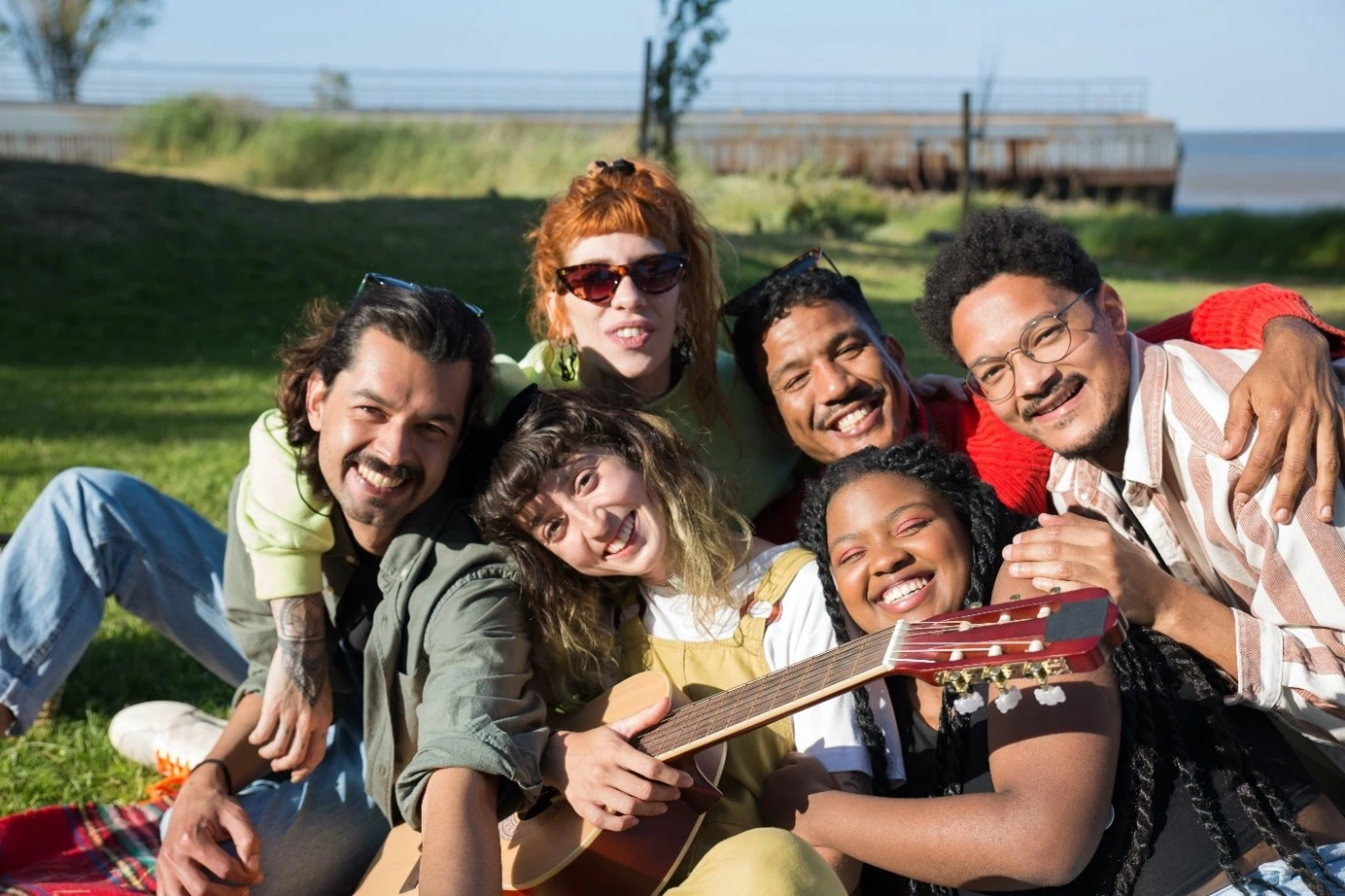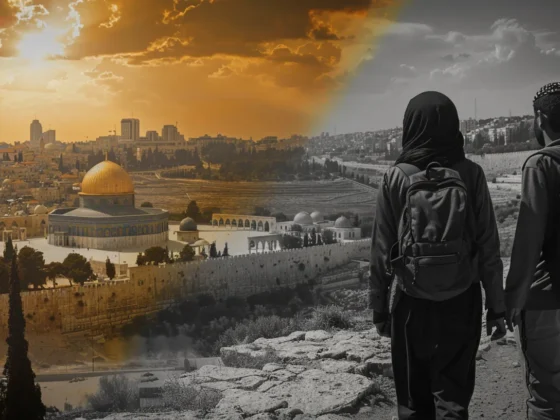Recent research from our lab shows that individuals with friends of a different race are perceived as “looking” more racially similar to the racial group of their friends. This phenomenon has significant consequences for how individuals with interracial friendships are perceived.
By Aisha Vogel & Jonas R. Kunst
How common are interracial friendships?
According to an Ipsos poll (Dunsmuir, 2013), roughly 40% of white Americans and around 25% of non-white Americans have exclusively same-race friendships. However, exceptions to the rule exist. Throughout history, interracial friendship has been a source of inspiration and hope in the midst of racial strife (Ambar, 2022). In the following, interracial friendships are highlighted that defied social norms and challenged the status quo of race relations in the United States.
Examples of famous interracial friendships
One famous example of an interracial friendship is the one between Abraham Lincoln and Frederick Douglass (Ambar, 2022). They formed a political alliance and interracial friendship, with Douglass helping Lincoln to inform those enslaved in the South that the Emancipation Proclamation would grant their freedom.
Another well-known example is the interracial friendship between Mary McCleod Bethune and Eleanor Roosevelt. Bethune’s relationship with Roosevelt gave her significant power and influence as the first black woman to serve as an advisor to the president. Together they worked on many efforts to advance the position of Black Americans and served as a symbol of what was possible on a national level.
The interracial friendship between Rabbi Abraham Joshua Heschel and Rev. Dr Martin Luther King Jr is also an excellent example of a famous interracial friendship (Ambar, 2022). They had a strong moral sense of justice in common. They got to know each other at the Chicago Conference on Religion and Race in 1963. Their friendship was exemplified during the Selma march in 1965 and King’s Riverside speech condemning the Vietnam War in 1967. Their bond drew attention to moral courage in the face of profound injustice and overcame historical tensions in Black-Jewish relations.
A current example of an interracial friendship is between Barack Obama and his Vice President, Joe Biden. Their friendship has attracted much public attention and academic discourse, including memes, and played a significant role in Biden’s rise to the presidency as the 46th and current president of the United States.
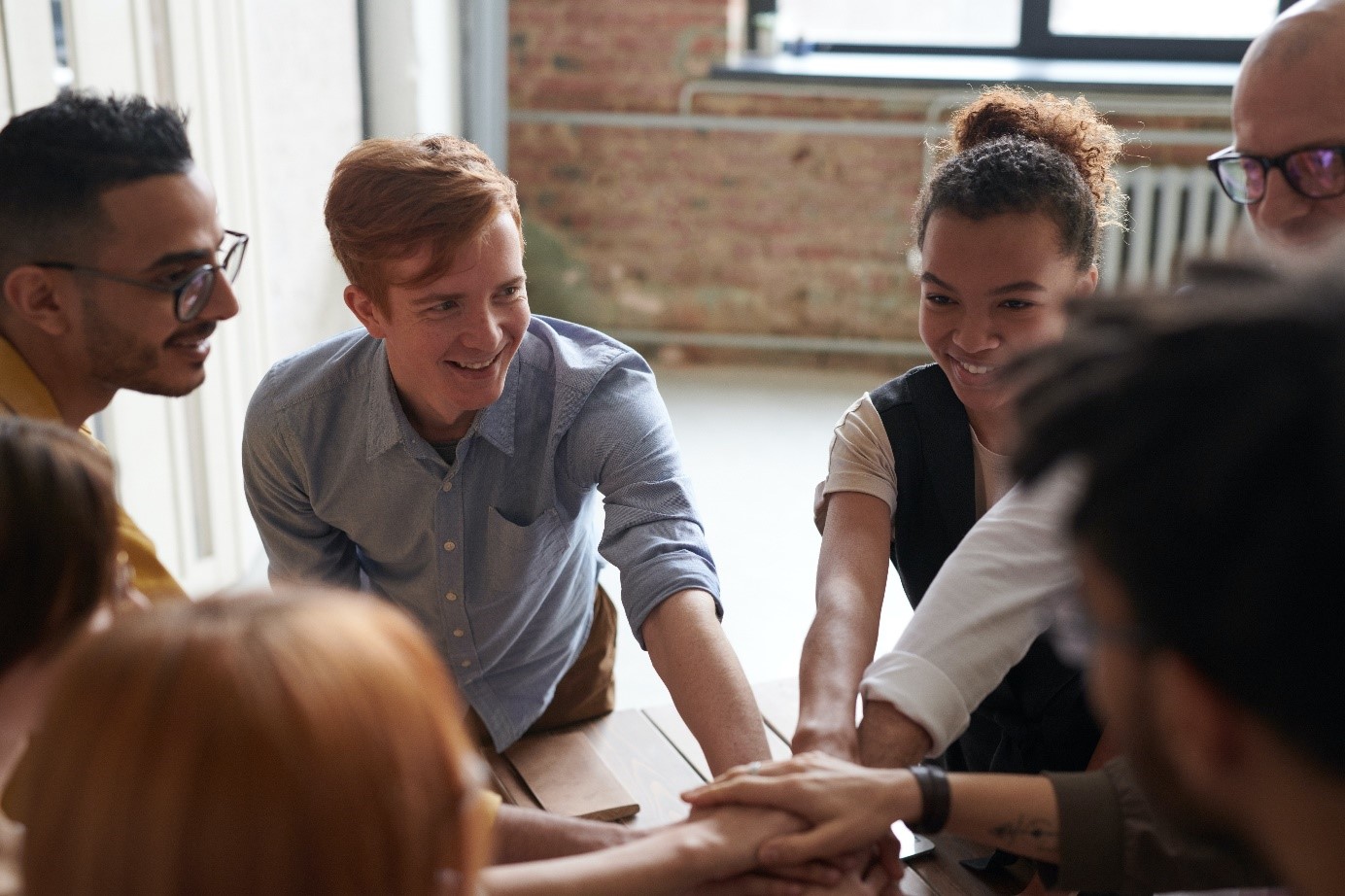
What friendships tell us about others
Friendships play an essential role in an individual’s social life and can provide valuable insights into other people’s personalities, behaviors, and attitudes, which will be discussed in this section.
One important aspect friendships reveal about others is their social skills and abilities: Studies have found that individuals with better friendship qualities tend to be more sociable (Flannery & Smith, 2017). There is also evidence that individuals with more empathetic friends become more empathetic (Miklikowska, 2022).
Friendships are also important for breaking down prejudices based on ethnic origin. For example, contact with people from different ethnic or socioeconomic backgrounds can help to reduce prejudice (Tropp & Pettigrew, 2005).
Another way in which friends can influence how others perceive us is through social comparison processes. According to Festinger’s (1954) theory of social comparison, people tend to compare themselves to others to evaluate their abilities and opinions. This means that the qualities and characteristics of our friends can influence how others perceive us, as people may judge us based on the people we associate with. For example, if someone is friends with a group of highly successful and accomplished people, others may see that person as more successful and accomplished themselves.
Yet a different way in which friends can affect how others perceive us is through the process of social identity (Tajfel & Turner, 1979). This theory suggests that people derive a sense of self-esteem and self-worth from the groups to which they belong. Therefore, the characteristics and qualities of our friends can also influence how others perceive us, as our association with certain groups can signal our own identity and values. For example, if someone is friends with a group of environmental activists, others may see that person as environmentally conscious and caring.
Overall, these studies suggest that friends can significantly impact how others perceive us. Our friends’ qualities and characteristics can signal our identity and values, influence others’ judgments of our personality traits and behavior, and even enhance others’ perceptions of us. Friendships can reveal much about others’ personalities, behaviors, and attitudes. The literature has shown that friendships can provide valuable insights into social skills, emotional stability, and values. Therefore, paying attention to the quality and quantity of friendships can provide useful information for understanding individuals’ social lives and overall well-being.
Our research
But what about interracial friendships? How do they influence how we evaluate others? Research from our lab suggests that perceiving individuals to have friends from an out-group fundamentally changes our perception of them, including their race, their personality traits, and perceptions of their solidarity with their own and other racial groups.
We conducted four studies with U.S. American participants of both Black and White ethnicity to test these assumptions. For this purpose, we used the so-called reverse correlation task (Dotsch & Todorov, 2012): Participants were shown two faces visually altered with random noise over a series of trials (see Figure 1). For each trial, they were asked to select the person who looked like an individual with either (a) only out-group friends, (b) only in-group friends, or (c) an equal number of in-group and out-group friends. Based on participants’ responses to 300 trials, we then calculated the average mental representation (image) they had of a person with each of the three friendship groups.
Figure 1
Reverse-correlation task used in Study 1 and 2 with aggregated images
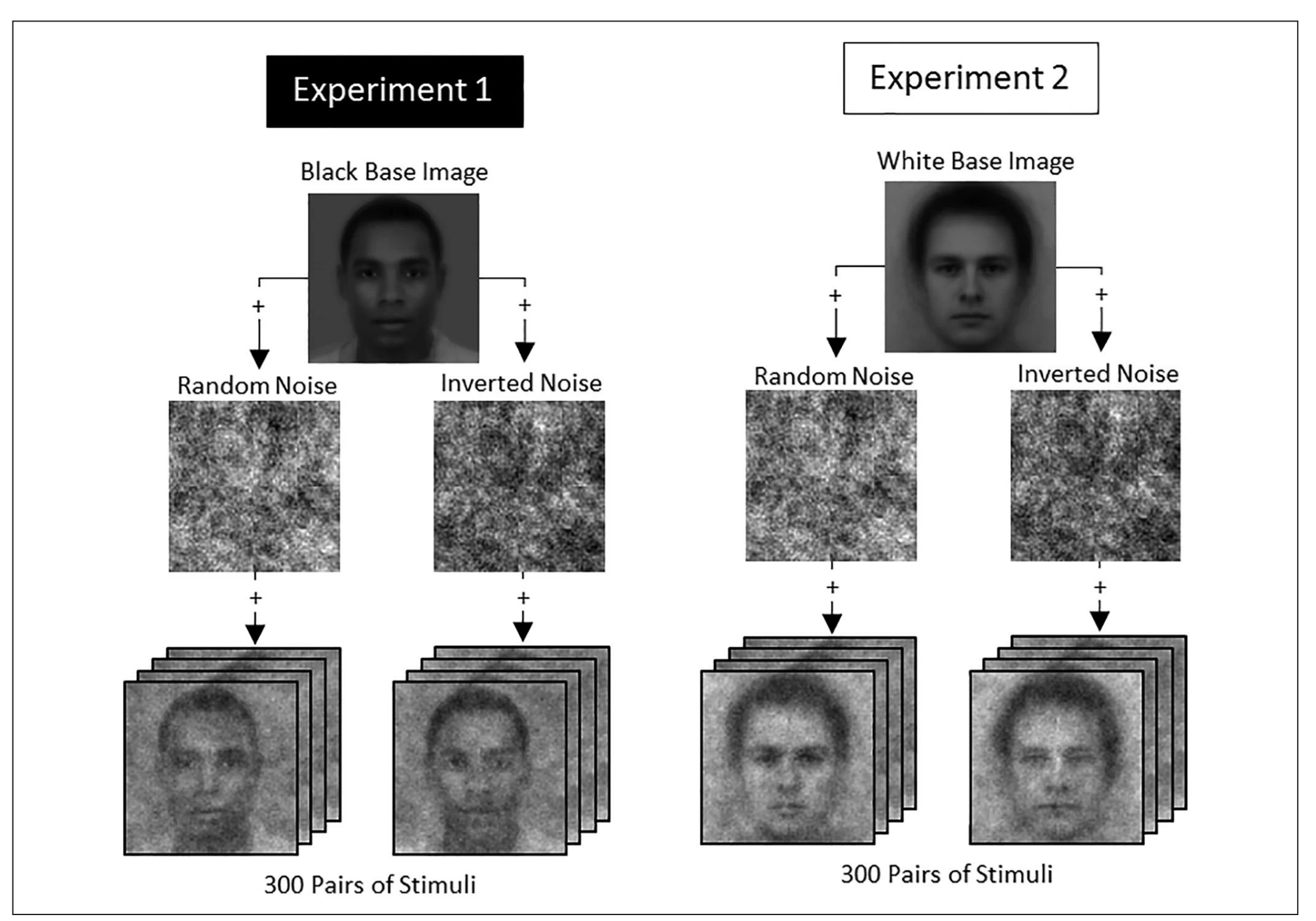
Could interracial friendships change perceptions of race?
Our first study aimed to explore if mental representations of a Black person’s race are affected by the racial makeup of their social circle. Participants had to complete the reverse-correlation task described above (Dotsch & Todorov, 2012; see Figure 1) with Black individuals shown in the images. They were assigned randomly to one of the three conditions described above. Our results showed that the mental representations of Black individuals with mostly Black friends had a darker skin tone than those of Black individuals with mostly or partly White friends.
Figure 2
Black And White Participants’ Mental Representations of Black And White Targets as a Function of the Target’s Friendship Networks in Study 1 and 2
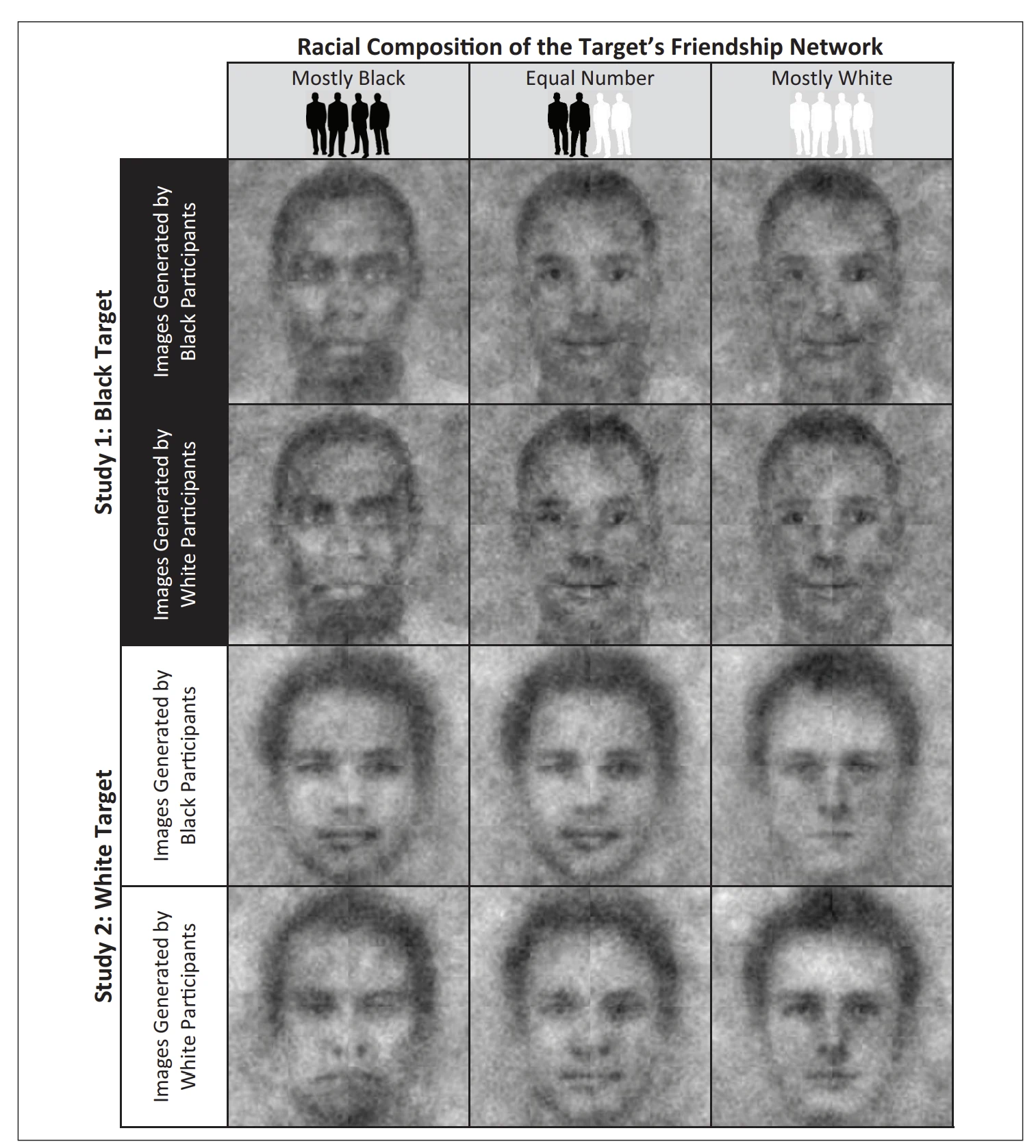
Study 2 used the same procedure as Study 1 – only the individuals that were shown to participants were different: Instead of Black individuals, White individuals (see Figure 1) were presented. Our results showed that the mental representations of White individuals with mostly White friends had a lighter skin tone than those of White individuals with mostly or partly Black friends.
To not solely rely on visual analyses of the skin tone of the images, in Studies 3 and 4, independent samples of raters evaluated the images generated in Studies 1 and 2. The results confirmed that individuals with partly or mostly out-group friends were rated as looking racially similar to their friends.
Interracial friendships change the traits we assign to people
In Study 4, for both Black and White individuals, participants rated targets generated in the mostly own-race friends’ condition as more supportive regarding social action that benefits their in-group. Moreover, images of individuals generated in the mostly own-race friends condition were perceived as least supportive regarding social action to benefit the respective out-group.
However, some striking differences were observed between the ratings of images generated by Black and White individuals in Studies 1 and 2. Participants of both races generally generated favorable images of racial in-group members with primarily own-race friends.
Yet, White participants generated negatively-biased images of in-group members who had many Black friends, possibly perceiving this as a betrayal of the dominant group. Conversely, Black participants generated positive images of in-group members with many White friends.
For out-group members, both Black and White image generators generated more negative images of out-group subjects who had mostly own-race friends, possibly interpreting this as an exclusionary attitude or prejudice.
Conclusion
In the United States, having friends of the same race can be considered to be the default. We found evidence that the mental representations of individuals’ race and traits can be influenced when the friendship group of an individual is perceived as deviating from this default. Individuals believed to have partly or mostly friends of a racial out-group were mentally represented as racially more similar to their friends.
Additionally, out-group individuals perceived to have mostly other-race friends were rated more positively, while White participants tended to have particularly negative images of in-group individuals believed to have predominantly out-group friends.
Overall, our present research suggests that interracial friendships may potentially change the traits that individuals assign to people of different races. However, future research is needed to investigate the potential downstream consequences of this effect.
Reference to Study:
Kunst, J. R., Onyeador, I. N., & Dovidio, J. F. (2022). Knowledge About Individuals’ Interracial Friendships Is Systematically Associated With Mental Representations of Race, Traits, and Group Solidarity. Personality & Social Psychology Bulletin, 48(5), 718-734. https://doi.org/10.1177/01461672211024118
